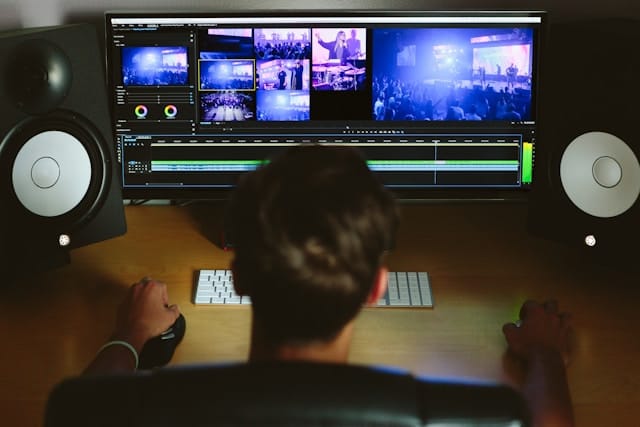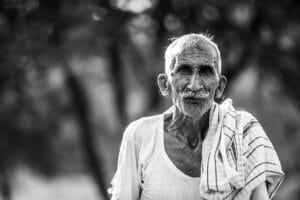With the rise of photo editing software and AI-powered tools, altering photos has become easier and more widespread. From subtle retouching to major alterations, many images we see online and in print may not be completely authentic. This has led to an increase in the spread of misinformation, particularly on social media platforms and news outlets.
For anyone who works with images, whether it’s a photographer, a journalist, or a digital content creator, it is essential to know how to check if a photo was edited. This skill can be crucial for maintaining credibility, ensuring ethical standards, or simply verifying the authenticity of images you come across.
In this comprehensive guide, we’ll explore various methods you can use to determine whether a photo has been altered. From visual inspection to technical analysis, you’ll learn how to identify key signs of manipulation and ensure the images you work with are genuine.
Step 1: Inspect the Photo Visually
The first and simplest way to check if a photo was edited is by closely inspecting it visually. While some edits may be subtle, others may leave clear signs that can be identified with a keen eye.
Key Things to Look For:
- Inconsistent Lighting: One of the biggest giveaways of photo manipulation is lighting that doesn’t make sense. If the shadows, reflections, or highlights in different parts of the image don’t match up, the image may have been edited.
- Unnatural Colors: Check if the colors look too vivid or unrealistic, which could indicate an adjustment of hues, saturation, or contrast in post-processing.
- Blurring and Sharpness: Edited photos may have areas that are unnaturally sharp or blurry. This can happen when parts of the image are retouched or objects are added or removed.
- Distorted Backgrounds: When elements of a photo are edited or removed, the background can appear warped or stretched, especially if the image editor wasn’t careful with details.
While these signs won’t always guarantee that an image has been edited, they provide a strong starting point for anyone looking to check if a photo was edited.
Step 2: Use Metadata to Analyze the Photo
Another effective way to check if a photo was edited is by looking at its metadata. Every digital image contains metadata, which stores information about the camera settings, the time and date the photo was taken, and, in some cases, the editing history.
How to Access Metadata:
- Windows: Right-click on the image file, select “Properties,” and then click on the “Details” tab.
- Mac: Open the image in Preview, click “Tools,” and then select “Show Inspector.”
- Online Tools: Websites like ExifTool allow you to upload an image and view its metadata, including any software used to edit the photo.
Key Metadata to Look For:
- Software Used: If the metadata shows that the image was opened or saved in an editing software like Photoshop, this is a clear sign that the photo was altered.
- Inconsistent Time Stamps: If the photo’s creation date doesn’t match the content of the image (e.g., a winter scene supposedly taken in summer), it could be a sign of manipulation.
- Camera Settings: Check if the exposure, ISO, or aperture settings are inconsistent with the look of the photo. A mismatch here could indicate post-production edits.
While metadata can give you useful information, it’s important to note that it can also be wiped or altered. Nonetheless, it remains a valuable tool to check if a photo was edited.
Step 3: Zoom In for Pixel-Level Examination
Sometimes, the only way to spot an edited photo is by zooming in and examining the image at a pixel level. When a photo is manipulated, the process can leave traces that are visible in the details of the pixels.
What to Look For When Zooming In:
- Pixelation: If certain parts of the image appear more pixelated than others, it could indicate that those areas were copied, pasted, or retouched.
- Color Variations: Look for small inconsistencies in color blending, especially around the edges of objects. Poor editing techniques may result in color mismatches or odd transitions between areas.
- Jaggies: These are jagged edges that may appear when parts of an image are moved or resized. Jaggies are often found where objects meet the background or at the edges of edited elements.
While pixel-level examination requires patience and attention to detail, it’s a highly effective way to check if a photo was edited when the changes are subtle.
Step 4: Use Reverse Image Search
If you suspect that a photo has been altered, one way to verify its authenticity is by using reverse image search. This method allows you to find similar or identical images across the web, which can reveal whether the photo you’re analyzing has been edited or reposted in a different context.
How to Perform a Reverse Image Search:
- Google Images: Go to the Google Images website and click on the camera icon to upload the image you want to search for. Google will then show you where else that image or similar images appear online.
- TinEye: This is another reverse image search engine that specializes in finding modified versions of images. Upload your image, and TinEye will provide a list of websites where that image, or versions of it, are hosted.
Reverse image search can help you determine if the image is genuine or has been edited and reposted multiple times. It’s an easy and effective way to check if a photo was edited, especially when it comes to images circulating on social media or news sites.
Step 5: Examine Shadows and Reflections
Shadows and reflections are essential components of realistic images, and they can be difficult to edit convincingly. When you’re trying to check if a photo was edited, look closely at the shadows and reflections to spot any discrepancies.
Key Signs of Edited Shadows and Reflections:
- Inconsistent Shadows: If objects in the image cast shadows in different directions or if the shadows don’t align with the light source, this is a clear sign that the photo may have been edited.
- Missing Shadows or Reflections: In some cases, objects that have been added to an image won’t have the corresponding shadows or reflections, which can give away the manipulation.
- Unrealistic Shadow Shapes: Check the shape and intensity of shadows. If they appear too sharp or don’t follow the natural contours of the objects, this could indicate editing.
Shadows and reflections are crucial in maintaining the realism of a photo, and they are often overlooked by inexperienced editors. Paying attention to these details can help you check if a photo was edited with greater accuracy.
Step 6: Analyze the File Size
Another useful technique to check if a photo was edited is by analyzing the file size. Edited images often have a larger or smaller file size than the original, depending on the level of compression or the addition of new elements.
How File Size Can Reveal Edits:
- Larger File Size: If a photo has been heavily edited or contains layers (as in Photoshop), the file size may be significantly larger than an unedited version.
- Smaller File Size: On the other hand, if the image was compressed after editing to reduce its size, it may lose some of its original quality, resulting in a smaller file size.
- File Format Changes: If an image was originally in RAW format (a format used by many digital cameras) but is now in JPEG or PNG, it could indicate that the photo has been processed or edited.
While not definitive proof, file size analysis can be a helpful clue when trying to determine if a photo has been altered.
Step 7: Compare Multiple Versions of the Image
If you have access to multiple versions of the same image, comparing them side by side can be a powerful way to check if a photo was edited. Even minor changes can become obvious when you examine two or more versions of a photo closely.
What to Look For:
- Differences in Lighting or Shadows: Any change in lighting or shadows may indicate an edit, especially if the photos were supposedly taken at the same time.
- Added or Removed Objects: Sometimes, photo editors will add or remove people or objects from an image. By comparing multiple versions, these changes can become easy to spot.
- Color Adjustments: Edits to contrast, saturation, and brightness can often be identified by comparing two versions of a photo.
This method is particularly useful when analyzing professional photos that have been retouched or when looking at images that have been used in different contexts.
Step 8: Use Image Forensics Tools
Image forensics tools are specialized software designed to analyze digital photos and detect signs of manipulation. These tools use advanced algorithms to uncover edits that may not be visible to the naked eye.
Popular Image Forensics Tools:
- FotoForensics: This online tool analyzes images for editing by detecting areas with different levels of compression, which can indicate retouching or manipulation.
- Image Edited: Another online tool that uses pixel-level analysis to identify potential edits in an image.
- JPEGsnoop: This forensic tool analyzes the structure of JPEG images and detects inconsistencies that could suggest editing.
Using these forensic tools can give you a deeper level of analysis and help you accurately check if a photo was edited.
Step 9: Seek Expert Opinions
Sometimes, the best way to check if a photo was edited is to consult an expert in photo forensics or image editing. Professionals with experience in photo manipulation can often spot subtle changes that most people would miss.
Where to Find Experts:
- Professional Photographers: Many photographers have a trained eye for spotting edits, especially when it comes to lighting, shadows, and color balance.
- Photo Forensics Services: There are companies and individuals who specialize in image analysis and can provide a detailed report on whether a photo has been edited.
- Online Communities: Forums like Reddit’s /r/photography or /r/photoshop can be useful places to ask for help from experienced users.
When you’re unsure about a photo and need a more in-depth analysis, seeking out expert opinions can provide definitive answers.
Step 10: Use Common Sense
Finally, while technical tools and visual inspection are important, don’t underestimate the value of common sense when trying to check if a photo was edited. If an image looks too good to be true, it might be.
Apply Common Sense Questions:
- Does the Image Look Natural?: If something about the photo feels off, whether it’s the lighting, the colors, or the proportions, it’s worth investigating further.
- Is the Source Reliable?: Consider the context in which the image was shared. Was it posted by a trustworthy source, or is it coming from a questionable website or social media account?
Trusting your instincts can often help you make the initial decision to delve deeper into an image’s authenticity.
Conclusion: Verify Photos with Confidence
In today’s digital landscape, knowing how to check if a photo was edited is a valuable skill. From subtle retouches to significant manipulations, image editing can dramatically change how we perceive reality. By following the techniques outlined in this guide—visual inspection, metadata analysis, reverse image search, and using forensic tools—you can confidently verify the authenticity of any photo you come across.
Whether you’re a journalist, a photographer, or simply someone who wants to ensure the images you see are genuine, the ability to spot edits is crucial. Stay vigilant, and always take the time to investigate when something doesn’t seem right.






